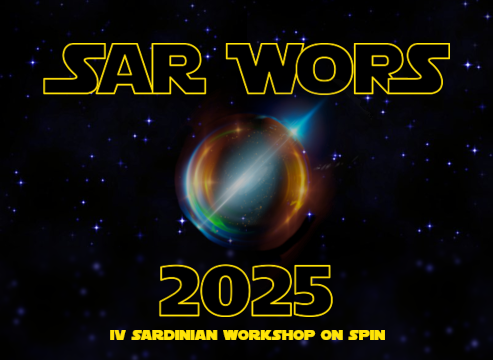Speaker
Description
In this talk I will review and discuss the main results obtained from our collaboration regarding the study and calculations of various parton distributions for light nuclei including 2H, 3H, 3H and 4He. In particular, I will review the evaluation of the nuclear EMC effect 3H, 3H and 4He where the nuclear structure functions incorporated in the EMC ratio have been calculated within the relativistic Poincar´e covariant Light-Front approach, which permits the utilization of sophisticated nuclear wave-functions derived from realistic nuclear potentials [1, 2]. We show that while results for 3He align with experimental data, indicating that conventional nuclear physics adequately predicts the EMC ratio in this case, the agreement with data for 4He is less satisfactory. This outcome suggests that for 4He, effects beyond conventional nuclear physics must be incorporated to explain the EMC effect. This analysis therefore establishes a critical baseline for future calculations. This approach has been similarly applied to calculate spin-dependent 3He structure functions. Results demonstrate excellent agreement with experimental data, and we have proposed a procedure to extract the corresponding neutron structure functions. We also review findings from our studies of nuclear GPDs and their associated asymmetries. Specifically, we provide predictions 3He and for 4He we discuss the agreement with current experimental data [5, 6, 7, 8]. Finally, we present our recent investigation of double parton scattering off light nuclei, specifically to propose experiments at the future Electron Ion Collider. To this aim, we provide the first realistic and relativistic calculation of the 2H double parton distributions. In conclusion, these studies have significant relevance for forthcoming experimental programs at JLab and EIC.
References
[1] E. Pace, M. Rinaldi, G. Salmè and S. Scopetta, Phys. Lett. B 839, 137810 (2023)
[2] F. Fornetti, E. Pace, M. Rinaldi, G. Salmè, S. Scopetta and M. Viviani, Phys. Lett. B
851, 138587 (2024)
[3] M. Rinaldi and S. Scopetta, Phys. Rev. C 85, 062201 (2012)
[4] M. Rinaldi and S. Scopetta, Phys. Rev. C 87, no.3, 035208 (2013)
[5] S. Fucini, S. Scopetta and M. Viviani, Phys. Rev. D 101, no.7, 071501 (2020)
[6] S. Fucini, S. Scopetta and M. Viviani, Phys. Rev. C 102, 065205 (2020)
[7] S. Fucini, M. Rinaldi and S. Scopetta, Few Body Syst. 62, no.1, 3 (2021)
[8] S. Fucini, M. Hattawy, M. Rinaldi and S. Scopetta, Eur. Phys. J. A 57, no.9, 273 (2021)

